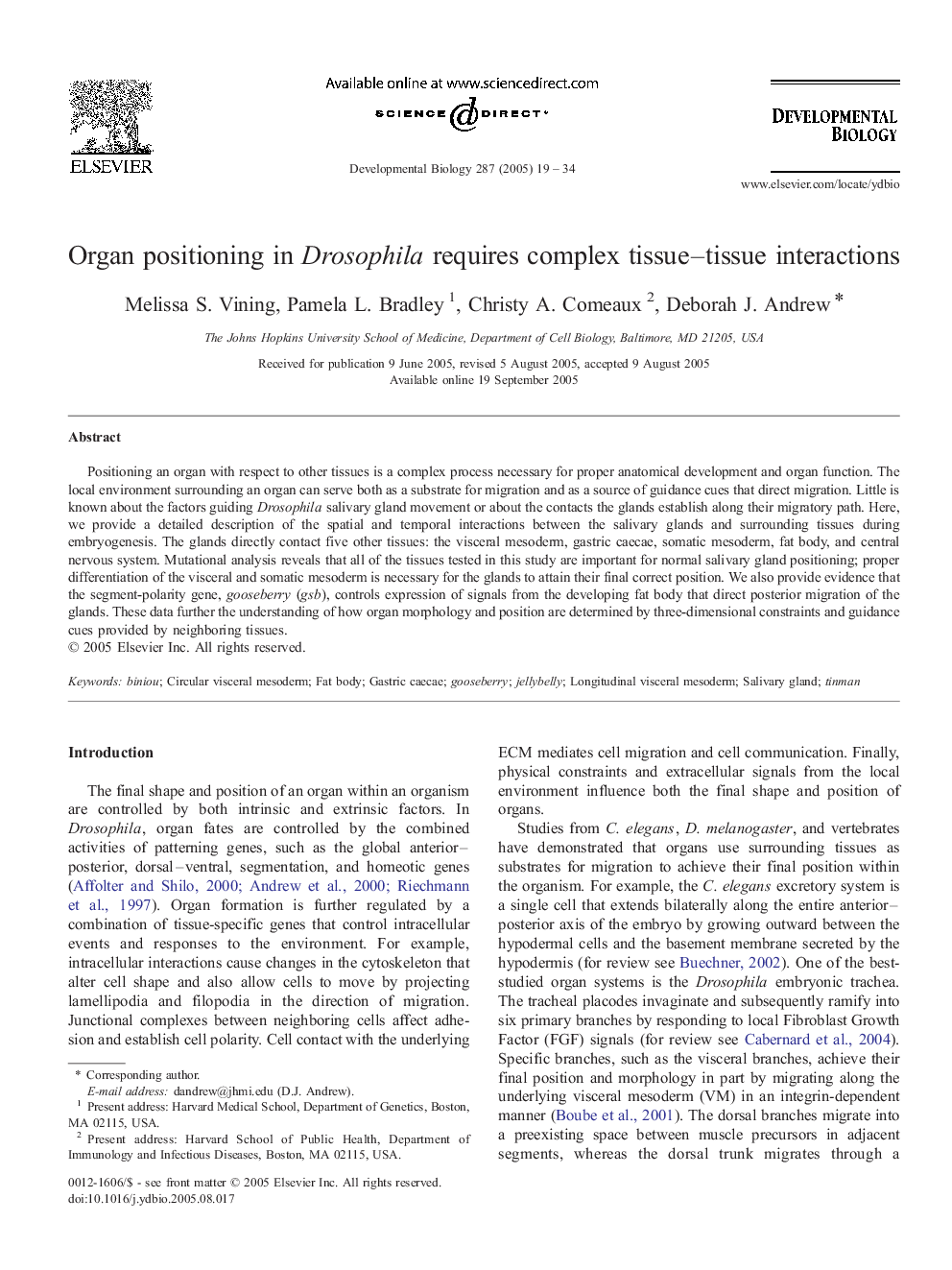| Article ID | Journal | Published Year | Pages | File Type |
|---|---|---|---|---|
| 10933848 | Developmental Biology | 2005 | 16 Pages |
Abstract
Positioning an organ with respect to other tissues is a complex process necessary for proper anatomical development and organ function. The local environment surrounding an organ can serve both as a substrate for migration and as a source of guidance cues that direct migration. Little is known about the factors guiding Drosophila salivary gland movement or about the contacts the glands establish along their migratory path. Here, we provide a detailed description of the spatial and temporal interactions between the salivary glands and surrounding tissues during embryogenesis. The glands directly contact five other tissues: the visceral mesoderm, gastric caecae, somatic mesoderm, fat body, and central nervous system. Mutational analysis reveals that all of the tissues tested in this study are important for normal salivary gland positioning; proper differentiation of the visceral and somatic mesoderm is necessary for the glands to attain their final correct position. We also provide evidence that the segment-polarity gene, gooseberry (gsb), controls expression of signals from the developing fat body that direct posterior migration of the glands. These data further the understanding of how organ morphology and position are determined by three-dimensional constraints and guidance cues provided by neighboring tissues.
Related Topics
Life Sciences
Biochemistry, Genetics and Molecular Biology
Cell Biology
Authors
Melissa S. Vining, Pamela L. Bradley, Christy A. Comeaux, Deborah J. Andrew,
